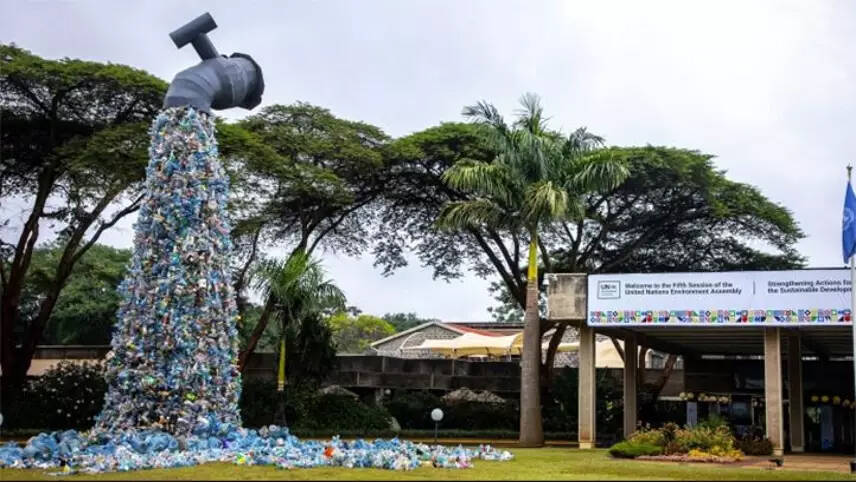Register for free and continue reading
Join our growing army of changemakers and get unlimited access to our premium content

Pictured: A 'plastic tap' exhibit at UNEP headquarters in Nairobi. Image: UNEP / Ahmed Nayim Yussuf
Following the agreement on broad terms of the Treaty last year, in which advocates for a reduction in plastic production won out, the UNEP had promised a ‘zero draft’ of the Treaty before the end of 2023.
That draft was published in English on Monday (4 September); the UNEP was able to work rapidly despite a messy process at recent negotiations in Paris. Versions in five more languages will be published before 2 October.
The draft states that nations should aim for the “prevention, progressive reduction and elimination of plastic pollution throughout the lifecycle of plastic”. Their approaches should be “comprehensive” and cover all parts of the lifecycle.
The idea is to reduce the absolute level of plastics production globally, with a focus on the materials that pose the most risk to the environment and public health. This will doubtless prove unpopular with major producing nations and the petrochemical industry.
The draft stops short of proposing time-bound, numerical targets but does stipulate that harmful chemicals and the hardest-to-recycle plastics should be phased out more rapidly.
It also floats global bans on the highest-risk plastics. Items may not need to be single-use to be banned; the draft mentions ‘short-lived’ plastics, too.
Even if time-bound, numerical targets are set as expected, they may vary between nations to account for factors such as current pollution and production levels, plus economic differences.
The draft states that each nation should develop and implement a national plan for its contribution to the Treaty – similarly to how the Paris Agreement on climate functions. They should also report progress publicly and regularly.
National plans should include plastics phase-out plans; plans to protect human health; updated product design and performance requirements; measures to scale up reuse and refill models; measures to scale product and packaging recycling including extended producer responsibility (EPR) interventions; details on the management of waste plastic fishing gear and plans to clean up existing plastic pollution.
Plans should also, the draft stipulates, detail how the reduction in plastic pollution can improve social outcomes. Additionally, they should note how the social impact of a reduction in plastic manufacturing could be managed, in relation to potential job losses. The UN has previously stated that the transition is an opportunity to create jobs and will, in time, prevent people working unregulated waste management jobs that typically come with low pay and high health and safety risks.
Neighbouring nations should coordinate the development of their national plans, the draft states. This could form the basis of new regional plans.
The UNEP will set up a new central body to facilitate cooperation in delivering the Treaty as soon as the final version is ratified. This is expected to take place during 2024.
Early reaction
WWF special envoy Marco Lambertini took to X (formerly Twitter) to call the draft “a turning point in the negotiations”. He said he welcomes the inclusions of potential global bans for high-risk plastics and the requirement for updated product design rules in national plans.
The Norwegian Academy of International Law’s Magnus Lovold, a specialist in international treaties, said the draft forms an “extremely solid basis” for the next rounds of negotiations, which start on 13 November in Kenya.
He wrote: “The petrochemical industry will no doubt try to make the draft weaker, less specific, less binding. They will not succeed.”
Greenpeace voiced the same concerns. The group is pushing for measures to reduce plastic production by at least 75% by 2040, claiming that this is necessary within the 1.5C trajectory of the Paris Agreement, per research published this year by Pacific Environment.


Please login or Register to leave a comment.